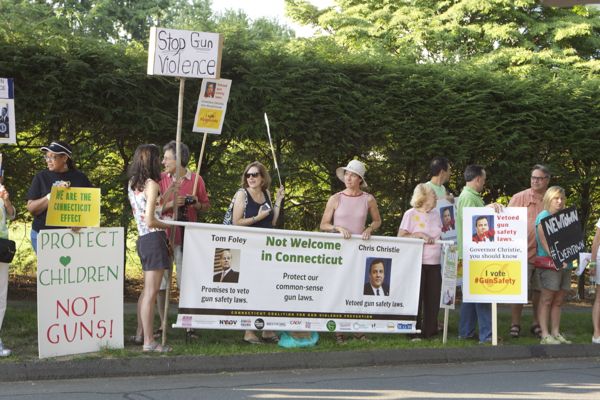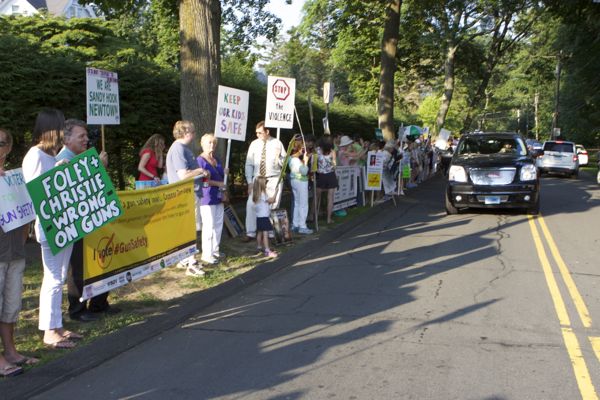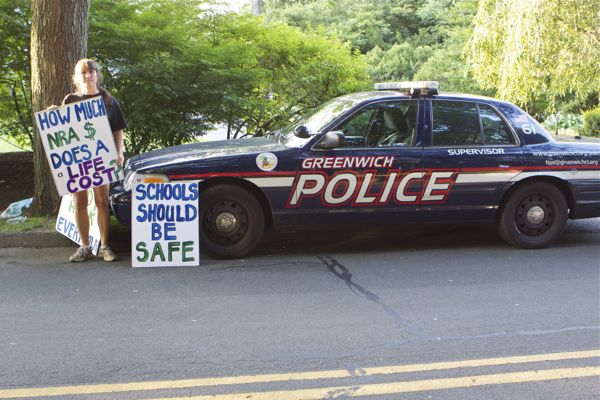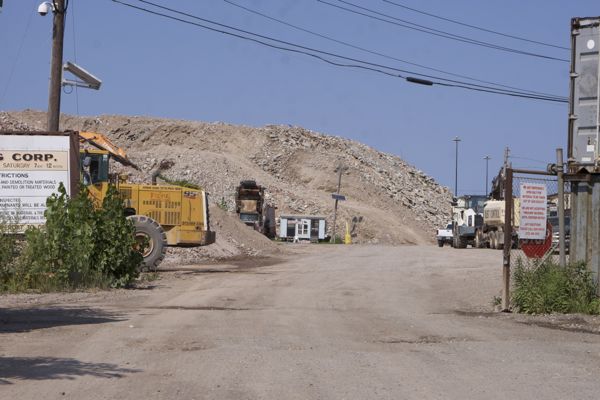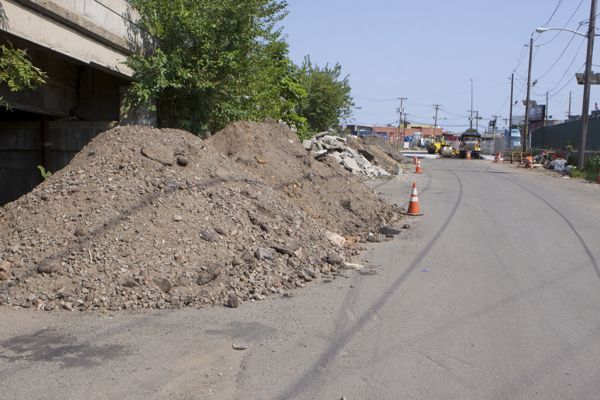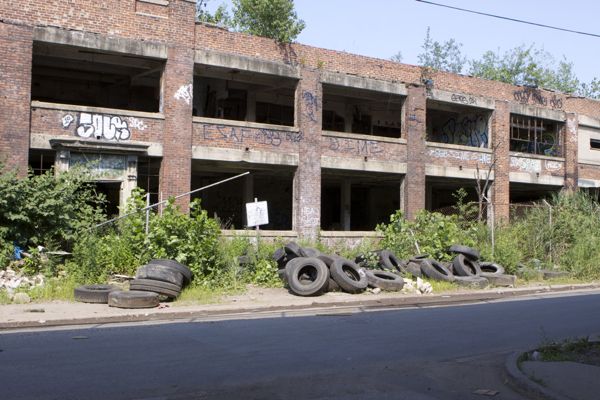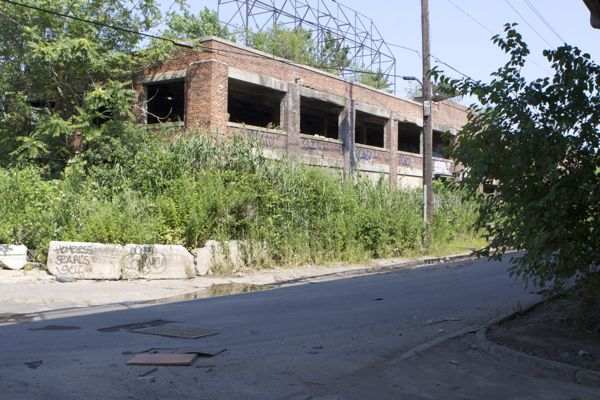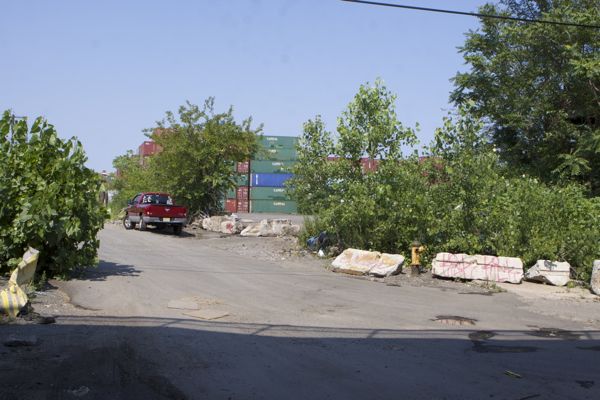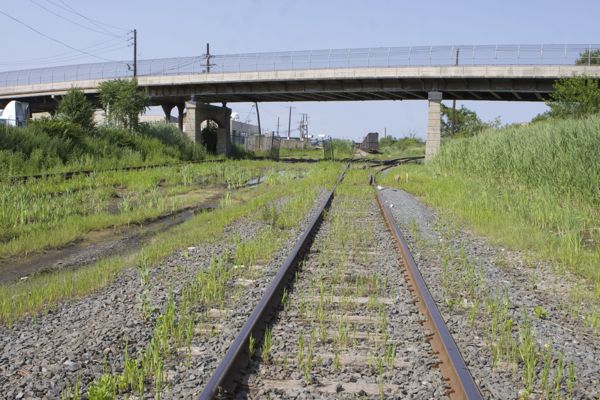DEP Has Failed To Meet Any Commitments Made On Barnegat Bay Nutrient Pollution
Documents Show That Gov. Christie’s “Commitment” is A Sham
DEP refuses to enforce “narrative” nutrient & ecological standards
This abuse happens all the time – the media get totally spun by DEP about science and regulatory issues.
And this example is about as clear cut as it gets. Follow below how I compare the press release spin with the exact same issues in regulatory documents.
Let’s begin our story with Governor Christie’s ” commitment” to Barnegat Bay, expressed in a May 4, 2010 press release:
Governor Chris Christie has made a commitment to determine the best approach to address the ecological health of the bay and to consider how to deal with effects on the bay of cooling systems at the Oyster Creek nuclear power plant.
Now, one year later, here is the Christie DEP’s spin on Barnegat Bay, in a July 20, 2011 press release where DEP was demonstrating their “new” water monitoring network to reporters:
“The Christie Administration is committed to the ecological restoration of Barnegat Bay,” Commissioner Martin said. “The data collected by this network will provide the foundation for the development of appropriate water quality standards for the bay. At the same time, this research will enable us to focus policies and resources to make sure that we are addressing the complex problems the bay faces as effectively and quickly as possible.”
Keep in mind that everyone agrees that Barnegat Bay water quality and the “ecological restoration” the Gov. is allegedly committed to are driven by nutrient pollution – which includes nutrients phosphorus and nitrogen, but nitrogen is the primary pollutant of concern in salt water.
So lets look at the DEP scientific and regulatory exchange with EPA – a tougher audience than news reporters – regarding how the data collected by that monitoring network is analyzed and applied in federal Clean Water Act regulatory programs – with a laser beam focus on Barnegat Bay nutrients.
First, let’s look at the 2012 Water Quality Assessment Methods Document adopted by DEP in July 2012, 1 year AFTER this press event:
Barnegat Bay: The Department, in cooperation with Barnegat Bay stakeholders, has initiated a comprehensive study of the Barnegat Bay Estuary and its tributaries that will provide water quality data to determine the locations and extent of water quality impairment. The Department is currently developing indexes to assess biological health and other methods for identifying the causes and sources of water quality impairment within the watershed, with the goal of developing watershed-specific nutrient criteria. Additional information about this effort is available on the Department’s Web site at http://www.state.nj.us/dep/barnegatbay/plan- wqstandards.htm. Because of its priority status, the Barnegat Bay initiative is proceeding on a different timeline than the 2012 303(d) List, which must be submitted to USEPA by April 2012. The Department will still include the Barnegat Bay in its statewide assessment of water quality for 2012; however, that assessment will be based primarily on concentrations of dissolved oxygen, levels of pathogenic bacteria, and other relevant data, as described in the 2012 Methods Document. This assessment will also utilize the extensive water monitoring data collected in Barnegat Bay and the tributaries throughout 2011 as part of this priority initiative. New assessment methods developed for the Barnegat Bay will be proposed for public review and comment separately from the draft 2012 Methods Document and, once those new methods are finalized, they will be employed to assess the waters of the Barnegat Bay Watershed. The Department expects the water quality assessment of the Barnegat Bay to be completed by 2013.
So, the DEP basically excluded Barnegat Bay from the 2012 assessment and impairment listing process, but promised to fix all that by 2013.
Not only that, they got caught trying to delist the northern portion of the Bay for low dissolved oxygen levels without adequate justification, according to EPA.
The DEP also took lots of strong criticism on the 2012 Methods document – from EPA and the Pinelands Preservation Alliance – about how the DEP’s water quality standards, nutrient policies, and assessment methods applied to Barnegat Bay’s problems – basically, commenters took the Department to task because they do not apply to Barnegat Bay, a criticism that the DEP confirmed, see this DEP response to comments:
Section 4.4: Assessment of Nutrient Impacts
25. Comment: The proposed method for assessing nutrient impacts continues to ignore estuarine waters such as Barnegat Bay and should be amended before adoption. The current narrative standard for nitrogen can and should be applied now to estuary waters and evaluated in light of impacts such as sea grass declines and harmful algal blooms. The Methods document should include a description of how the Department will apply existing data on aquatic life to the narrative nutrient criteria provision.
26. Comment: In December of 2010, the NJDEP adopted the revisions to its narrative nutrient criteria making it applicable to all waters of the State. The first sentence of the paragraph should read as follows: “The SWQS include narrative nutrient criteria that apply to all waters of the State”. (EPA)
Response to Comments 25 and 26: The Department has revised Section 4.4 to indicate that the narrative nutrient criteria apply to all waterbody types; however, the Department has developed a method to evaluate nutrient impacts only in freshwater wadeable streams. The titles of Section 4.4 and Table 4.4 have been revised to make that clear. Until assessment methods and thresholds are developed for lakes, estuaries, ocean waters, and non-wadeable rivers, and incorporated into the Methods Document, no assessments will be made to determine whether the narrative nutrient criteria is met for those waters.
Got that?
Repeat: “no assessments will be made to determine whether the narrative nutrient criteria is met for those waters”
DEP just refused to enforce the current nutrient standards (and other current SWQS that apply to ecological health).
Let’s repeat it for good measure:
Until assessment methods and thresholds are developed for lakes, estuaries, ocean waters, and non-wadeable rivers, and incorporated into the Methods Document, no assessments will be made to determine whether the narrative nutrient criteria is met for those waters.
Wow – DEP flat out admitted that nutrient criteria are meaningless because DEP lacks methods to monitor and assess and enforce them!
But, they said that Gov. Christie is committed to the ecological health of Barnegat bay and the they will fix all these problems “by 2013″.
So, now that were’ past 2013, let’s look at the 2014 draft Water Quality Assessment Methods Document to see how deficiencies documented in the 2012 cycle were remedied and whether DEP honored the specific commitments they made. DEP said, by 2013, they would:
- provide the foundation for the development of appropriate water quality standards for the bay
- provide water quality data to determine the locations and extent of water quality impairment
- develop indexes to assess biological health and other methods for identifying the causes and sources of water quality impairment within the watershed
- develop watershed-specific nutrient criteria
- develop nutrient assessment methods and thresholds for lakes, estuaries, ocean waters, and non-wadeable rivers
Did DEP meet ANY of these commitments? Any single one? Did they apply them in the 2014 cycle?
The answer is a RESOUNDING NO TO EACH AND EVERY ONE.
Th DEP didn’t even try. The didn’t even allocate adequate resources to meet the commitments.
So let’s look at what DEP has done in the 2014 cycle –
Remarkably, in addition to not meeting the 2012 commitments and those of the Governor, they actually made the situation worse.
First, DEP excludes most if not all of the data collected by the “new” monitoring network they touted back in 2011:
The 2014 303(d) List will be developed using all appropriate and readily available data collected between January 1, 2008 and December 31, 2012 in accordance with a Quality Assurance Program Plan (QAPP) approved by the Department or EPA and uploaded into the Department’s Water Quality Data Exchange (WQDE) system at http://www.nj.gov/dep/wms/wqde, USEPA’s STORET data warehouse, or the USGS National Water Information System (NWIS) by July 1, 2013.
Most obviously. Rutgers’ study by Dr. Kennish – although it as “in accordance with a Quality Assurance Program Plan approved by the Department” – is not final and will not be considered.
[Note to Littoral Society: DEP does not accept “citizen” data – read the excerpt above. Water quality data must in “accordance with a Quality Assurance Program Plan (QAPP) approved by the Department or EPA”. That rules out your app and citizen data. Citizens and apps can not replace government regulators.]
Second, DEP even failed to commit sufficient resources so that they could apply the new monitoring and assessment approach they touted:
In 2010, the Department initiated the Barnegat Bay Ten-Point Action Plan as a model approach for water quality assessment and restoration on a regional basis, to be replicated throughout New Jersey. …
Since the degree of rigor that could be applied in Step 2 of the 2012 Integrated Assessment was limited because it was applied on a statewide basis with limited resources and time; starting with the 2014 cycle, the comprehensive assessment will be applied more thoroughly, with the focus on a selected region.
Third, since nutrients are the critical pollutants of concern in Barnegat Bay, let’s look at DEP water quality nutrient standards apply, how they assess the nutrient standard in 2014.
Nutrients: The SWQS include narrative nutrient criteria that apply to all freshwaters of the State, in addition to the applicable numeric criteria for phosphorus. The narrative nutrient criteria prohibit nutrient concentrations that cause objectionable algal densities, nuisance aquatic vegetation, or render waters unsuitable for designated uses. Biological data, along with continuous dissolved oxygen, pH, and Chlorophyll a data (where available) are used as translators of the narrative nutrient criteria, as explained in Section 4.4.
That’s right. DEP actually made this worse than the 2012 Report, where is response to comments 25 & 26 (from EPA) DEP stated that the narrative nutrient standard technically applied to all waters (including Barnegat bay), but that DEP just didn’t have the tools to measure compliance with and enforce those standards.
Now, DEP is not even making that concession. DEP now says the narrative nutrient criteria applies only to freshwaters. They don’t even say that the nutrient narrative criteria technical applies to Barnegat bay and other salt and estuaries waters, but can’t be enforced to due a lack of assessment methods.
So, let’s be clear: DEP does not have a numeric standard for nutrient impacts and worse, DEP’s narrative nutrient standard does not apply to Barenegat Bay! And there are no assessment methods or thresholds for lakes, estuaries, ocean waters, and non-wadeable rivers.
That’s like saying the 65 mph speed limit does not apply to the Turnpike! There’s not even “don’t go too fast” “narrative standard for the speed limit. There is no fucking limit at all!
DEP Math:
(No applicable water quality standards) + (no assessment methods) = no impairment and TMDL problems!
But that can’t be right – let’s now go to Section 4.4. and see what it says:
Well, the title of Section 4.4 makes it pretty clear the the narrative nutrient standard does not apply to Barnegat Bay – and even for wadeable freshwater streams it is unenforceable and virtually meaningless:
4.4 Assessment of Nutrient Impacts in Freshwater Streams
… Numeric criteria are not currently defined in terms of the frequency and duration that the criterion could be exceeded and still support a healthy aquatic community. Defining the best means to interpret the numeric criteria and/or refining the criteria is an ongoing task as set forth in the Department’s Nutrient Criteria Enhancement Plan, which is available on the Department’s Web site at http://www.state.nj.us/dep/wms/bwqsa/nutrient_criteria.htm.
Ongoing task? Right.
Governor’s commitment?
Only in the press releases.
That’s a real commitment by Gov. Christie, eh?
